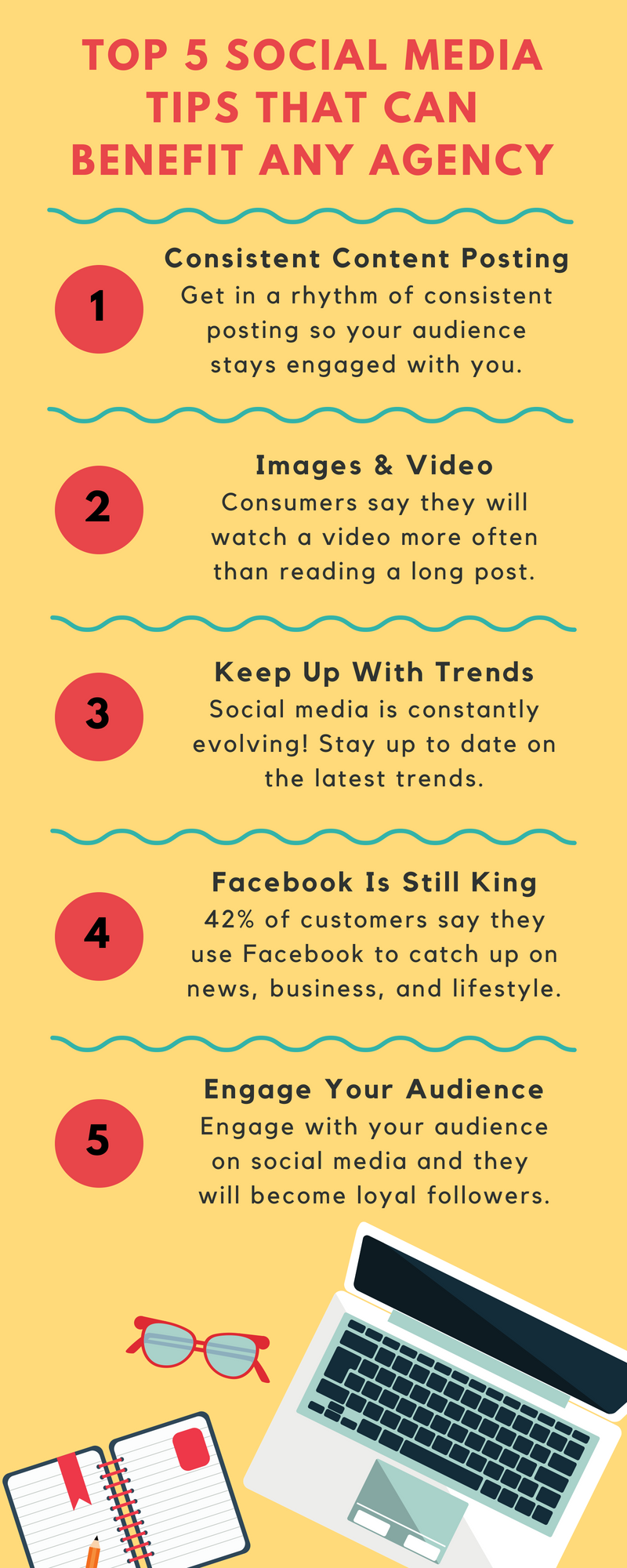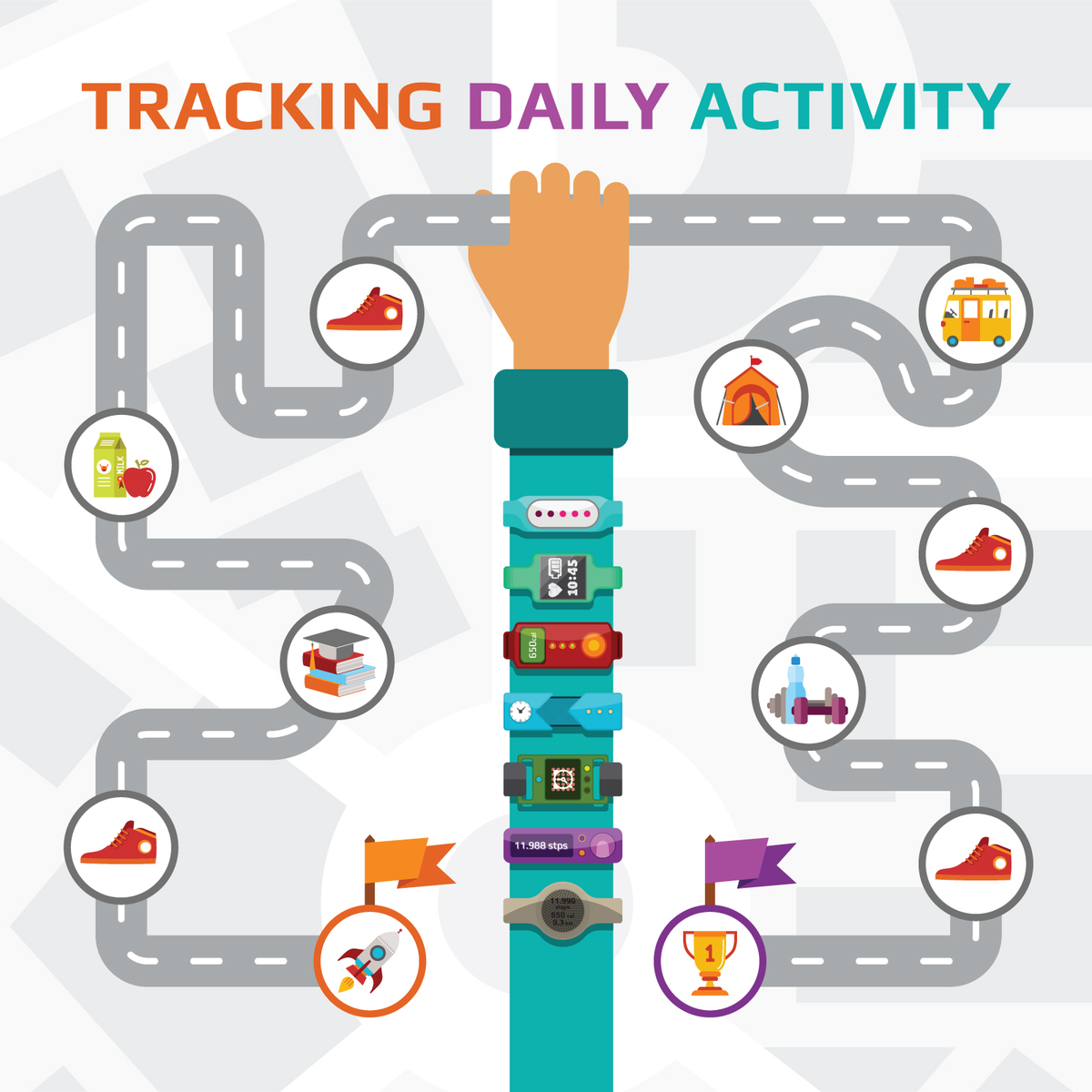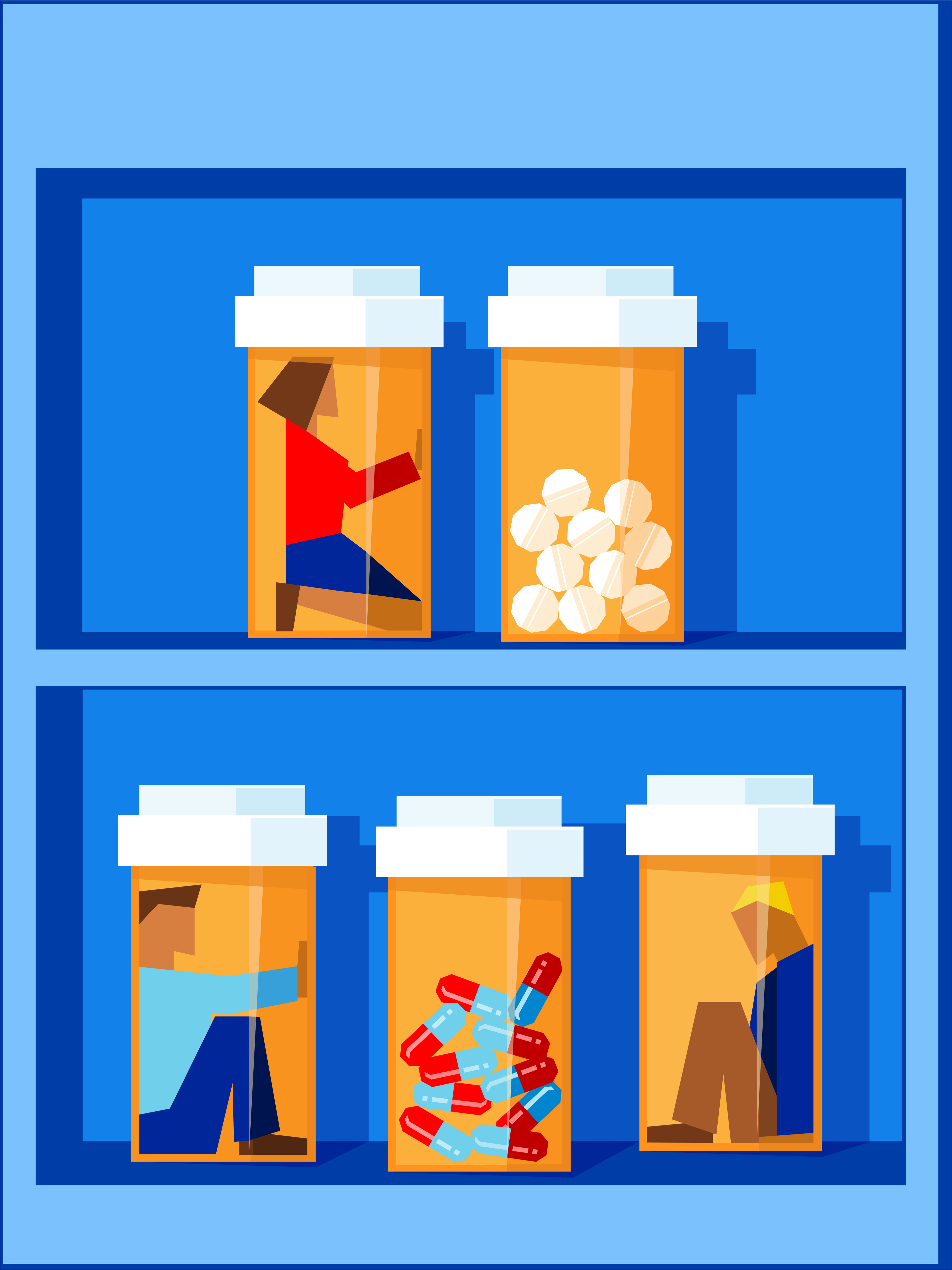
Top 5 Social Media Tips!
The world is connected nowadays through our screens. Whether it be email, texting, websites, FaceTime, or social media; we all use technology to connect us to others.


The world is connected nowadays through our screens. Whether it be email, texting, websites, FaceTime, or social media; we all use technology to connect us to others.


 Don’t lie–we ALL love gadgets. From the obscure (but hilariously reviewed on Amazon) Hutzler 571 Banana Slicer to the latest iteration of the Apple empire. Gadgets and technology can make our lives easier, make processes faster, and even help us get healthier. Businesses are now using the popularity of wearable technology to encourage employee wellness and increase productivity and morale.
Don’t lie–we ALL love gadgets. From the obscure (but hilariously reviewed on Amazon) Hutzler 571 Banana Slicer to the latest iteration of the Apple empire. Gadgets and technology can make our lives easier, make processes faster, and even help us get healthier. Businesses are now using the popularity of wearable technology to encourage employee wellness and increase productivity and morale.
According to a survey cited on Huffington Post, “82% of wearable technology users in American said it enhanced their lives in one way or another.” How so? Well, in the instance of health and wellness, tech wearers are much more aware of how much, or how little, they are moving throughout the day. We know that our sedentary lifestyles aren’t healthy and can lead to bigger health risks long term. Obesity, heart disease, high blood pressure, and Type 2 Diabetes are all side effects of this non-active lifestyle. But, these are all side effects that can be reversed with physically getting moving. Being aware of the cause of these problems helps us get motivated to work towards a solution.
Fitbit, Apple Watch, Pebble, and Jawbone UP all have activity tracking devices. Many companies are offering incentives for employees who work on staying fit and healthy by using this wearable technology. For example, BP Oil gave employees a free Fitbit in exchange for them tracking their annual steps. Those BP employees who logged 1 million steps in a year were given lower insurance premiums. These benefits for the employee are monetary but there are other pros to consider as well. The data collected with wearable technology is very accurate and can help the user when she goes to her physician for an ailment. The doctor can look at this data and it can help connect the dots with symptoms and then assist the provider with a diagnosis.
So, what are the advantages to the company who creates wellness programs utilizing wearable technology?
The overall health and fitness of the company can be the driving force behind introducing wearable technology in a business but the benefits are so much more than that. Morale and productivity are intangible benefits but very important ones to consider. All in all, wearable technology is a great incentive for adopting healthy lifestyles and that benefits everyone—employee AND employer.

 New technologies are poised to fundamentally change the HR industry as we know it. Just as the smartphone revolutionized the way we communicate, artificial intelligence will reshape all areas of HR, from employee onboarding to learning management to developing top talent. And, similar to smartphones, these changes will take place at lightning speed.
New technologies are poised to fundamentally change the HR industry as we know it. Just as the smartphone revolutionized the way we communicate, artificial intelligence will reshape all areas of HR, from employee onboarding to learning management to developing top talent. And, similar to smartphones, these changes will take place at lightning speed.
But what exactly is artificial intelligence? And what implications might this evolving tech have on the future of health care? Buckle up, because we’re going to take a glimpse into the current AI projects, as well as what the future of health care could look like with AI advancements.
In its most basic form, artificial intelligence uses computer programming to develop systems that are able to perform tasks that would normally require human intelligence. These tasks could include speech recognition, decision-making, language translation, and much more.
Have you ever wondered how ridesharing apps like Uber and Lyft are able to predict ETAs for rides? Artificial intelligence. Or, how email platforms know how to filter out spam and nicely categorize your emails into categories? Yep, artificial intelligence. Or, how your banking app is able to process a check deposit via a simple image? You guessed it, artificial intelligence.
Artificial intelligence has become an integral part of many of the technologies and services that we use in our everyday life without us even knowing or really thinking about it.
In addition to its many convenient applications, AI also offers a promising and impactful future in the field of health care.
The use of artificial intelligence is completely altering the front door of health care as we know it. From specific programs that aid in medical diagnostics to intelligent apps that triage remote patients, AI is making health care more efficient and accessible than ever.
One of the primary areas in which AI shines versus manual human processes in the field of data analysis. Not only can artificial intelligence process complex sets of data at lightning speed, it can also provide meaningful and actionable insight and recommendations based on data sets. DeepMind(acquired by Google in 2014) is an AI-based technology that works to expedite the process in which patients are moved from ‘test’ to ‘treatment’. IBM’s Watsonproduct provides solutions for interpreting, organizing, and easily accessing clinical and patient data, in addition to providing technology for recognizing patient similarity and medical insights. According to IBM, medical data is expected to double every 73 days by 2020. And, each person will generate enough health-related data in their lifetime to fill 300 million physical books. Utilizing AI will not only expedite the process in which health care providers access patient info but also better-organize and analyze data available and even provide predictions on future health concerns and recommendations for treatment plans.
The FDA recently approved the use of artificial intelligence powered software for the use of medical diagnostics, marking the first use of AI in this application. The program is designed to detect signs of diabetic retinopathy, a condition that can cause long-term vision loss and that impacts more than 30 million people in the United States alone. The technology uses an AI algorithm to scan and analyze multiple images of an eye and then delivers a positive or negative test result. This is the first FDA approved solution that does not require a doctor to interpret test results, and more AI-based diagnostic solutions are expected to get the green light in the next several years.
It’s no secret that testing pharmaceuticals through clinical trials is an expensive and time-consuming process. The full development, testing, and approval process can literally take decades and cost billions. Though pharmaceutical players of all sizes are currently experimenting with AI applications in the drug discovery and development process, GSK is considered a leader in the space. GSK has fully embraced AI research and applications with their dedicated in-house team, ‘In silico Drug Discovery Unit’. The ultimate goal of the GSK project is to leverage artificial intelligence to shorten the drug research, testing, and launch window to under a year, a bold vision. Making the pharmaceutical process more efficient could drastically reduce the cost of medical treatments and the cost of health care in general.
China is facing one of the most alarming doctor shortagesin history, with only 1.5 doctors for every 1,000 residents (compared to 2.5 doctors per person in the United States). The need is dire, and the government is calling for action and loosening restrictions on the use of data and new technology. Currently, more than 100 companies are working to develop AI solutions to address urgent health care needs. A recent reportpredicted that China’s market for AI-powered health care services will reach almost $6B yuan ($930 Million) by 2022. Current projects include diagnostic tools to assist with CT scans, x-rays, ultrasound scans and prosthetic design and manufacturing.
Which would you prefer – an hour-long wait in a doctor’s office plus the time to actually see the doctor, or a quick 15-minute consultation and diagnosis via your smartphone? Though many assume telemedicine is a modern iteration of health care, this practice has actually been around since the 1950’s. Now, telemedicine is a common alternative to traditional doctor’s visits for simple diagnostics and treatment. A new app, 98point6, is taking this remote-experience to the next level with artificial intelligence. The technology interacts with subscribers to help better understand medical needs and then channels requests to the appropriate doctor for evaluation. The AI-bot essentially serves as a personalized triage service, saving manual time and labor.
The adoption and utilization of artificial intelligence in the health care space will make health care more accessible, efficient, and affordable for everyone.
by Meisha Bochicchio, Content Marketing Manager at PlanSource
Originally posted on blog.ubabenefits.com

 Lately, there’s been a big focus on America’s opioid addiction in the news. Whether it’s news on the abuse of the drug or it’s information sharing on how the drug works, Americans are talking about this subject regularly. We want to help educate you on this hot topic.
Lately, there’s been a big focus on America’s opioid addiction in the news. Whether it’s news on the abuse of the drug or it’s information sharing on how the drug works, Americans are talking about this subject regularly. We want to help educate you on this hot topic.
Opioids are made from the opium poppy plant. Opium has been around since 3,400 BC and it was first referenced as being cultivated in Southwest Asia. The drug traveled the Silk Road from the Mediterranean to Asia to China. Since then, the drug has gained popularity for pain relief but it also has gained notoriety as an abused drug. Morphine, Codeine, and Heroin are all derived from the opium poppy and are all highly addictive drugs that are abused all around the world. As the demand for these drugs has increased, so has the production. From 2016 to 2017, the area under opium poppy cultivation in Afghanistan increased by 63 percent. In 2016, it killed some 64,000 Americans, more than double the number in 2005.
We can see that the danger from this drug is growing rapidly. What can we do to recognize potential abuse problems and to get help? Here are some facts about opioid addiction:
Make sure you are educated about the dangers of opioid abuse. But, don’t be discouraged and think that the abuse is incurable! There are many resources that can be used to break the addiction cycle and can make real change in the lives of its victims. Ask for help and offer help.
Have you ever heard the proverb “Knowledge is power?” It means that knowledge is more powerful than just physical strength and with knowledge people can produce powerful results. This applies to your annual medical physical as well! The #1 goal of your annual exam is to GAIN KNOWLEDGE. Annual exams offer you and your doctor a baseline for your health as well as being key to detecting early signs of diseases and conditions.
View the video below for more information.

 The world is connected nowadays through our screens. Whether it be email, texting, websites, Facetime, or social media; we all use technology to connect us to others. According to Hubspot, an online marketing and sales software provider, consumers are on social networks more than ever before. They wrote:
The world is connected nowadays through our screens. Whether it be email, texting, websites, Facetime, or social media; we all use technology to connect us to others. According to Hubspot, an online marketing and sales software provider, consumers are on social networks more than ever before. They wrote:
“In our survey of 1,091 global internet users, we’ve found people have dramatically increased content consumption on the three most popular social networks in the last two years: Facebook (+57% increase), Twitter (25% increase), and LinkedIn (21% increase). These networks have notably doubled down on content in the past few years to capture and retain the attention of their users — and it appears the playbook is working.” The Future of Content Marketing: How People Are Changing the Way They Read, Interact, and Engage With Content
So, how do you harness this tech to strengthen your connectivity to your audience? Here’s the top 5 tips for using social media that every agency can benefit from using.
Your followers want to know when they can expect new info to be posted on your website and social media. If you post once a week for 3 weeks and then not post again for another month, your audience will quit paying attention. Consistency is the key! Make a point to post at the same general time on the same days and you will see more interaction from your followers.
62% of users thoroughly consume the social media post if it includes video as compared to only 25% consumption of traditional long content posts. That’s a HUGE difference! Grab your audience’s attention when they are scrolling through their social media by posting pictures and videos. They are telling us that they will stop and watch or read more than skimming because of the images they see.
Pay attention to what you are most engaged with on social media. Do you like to watch Facebook Live videos? Do you stop and scroll through pictures from companies when they post what they are doing in the community? Do you prefer to chat with a customer service representative online versus an email? If you are seeing your preferences change, there is a good chance your audience’s preferences are changing. Post pictures of your teams serving their community. Use videos to educate your clients on relevant issues in your field. Social media is constantly evolving so stay up on trends and use them on your pages!
Consumers are using Facebook for more than just connecting to their high school friends—they are using it to read content from their favorite businesses and groups. This means you MUST keep your Facebook page updated and have new content posted regularly. According to a new Hubspot survey, 48% of consumers use their Facebook feed to catch up on news, business, and lifestyle stories. This ties back to Tip #1 and reiterates that consistent posting is the sweet spot for engaging customers.
How are you talking to the people who use your business? Are you responding to inquiries on Facebook? When you post pictures on LinkedIn are you responding to the people who are looking and commenting on them? When you engage with your followers, they are more likely to have a stronger relationship with you. Entrepreneur Magazine says, “They are more likely to have a better evaluation of the brands, stay loyal to the brands and recommend the brands to others.”
By following these tips, your social media pages can grow into healthy sites and you can be more effective as you engage with your audience. Start using them today!